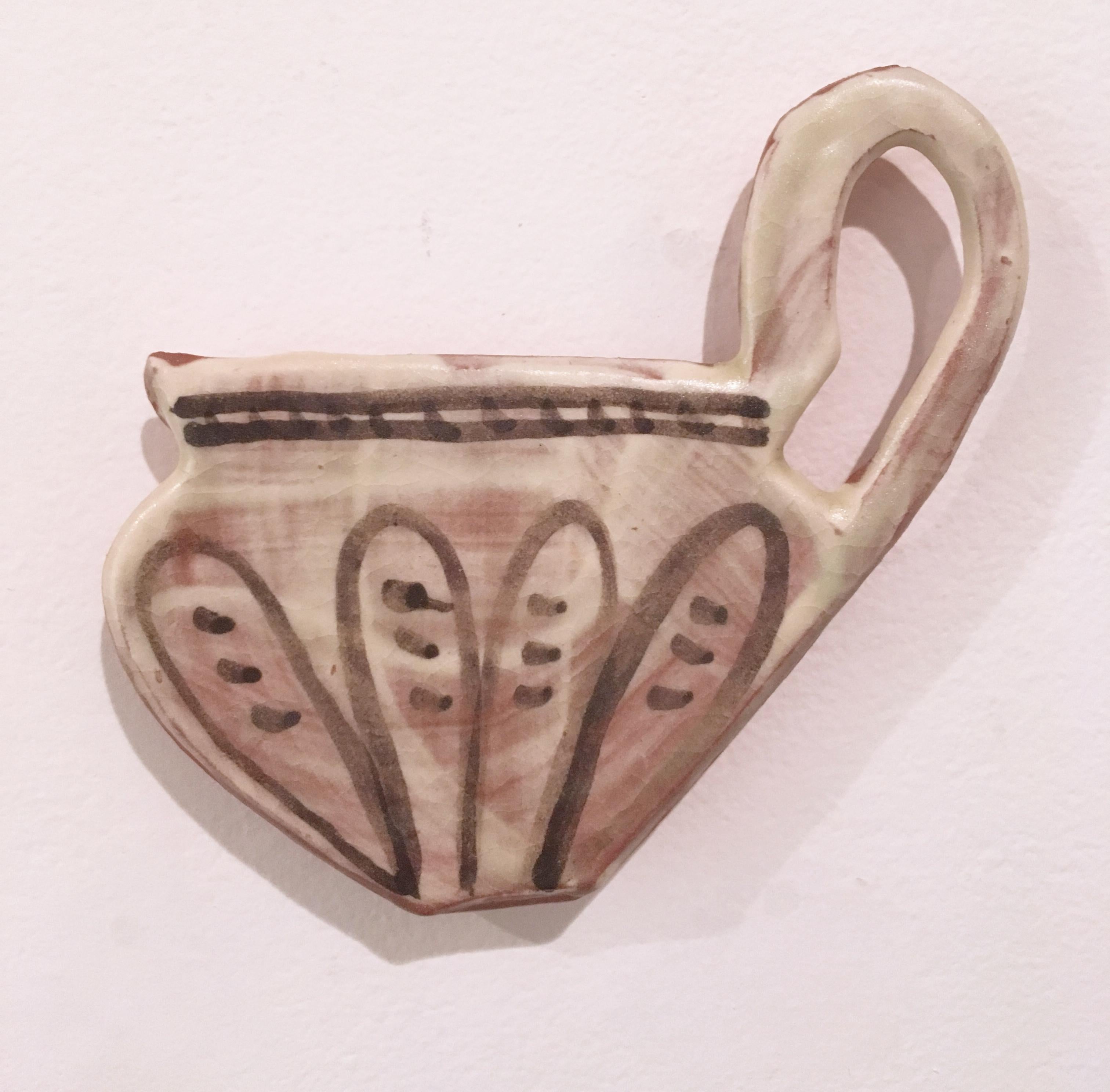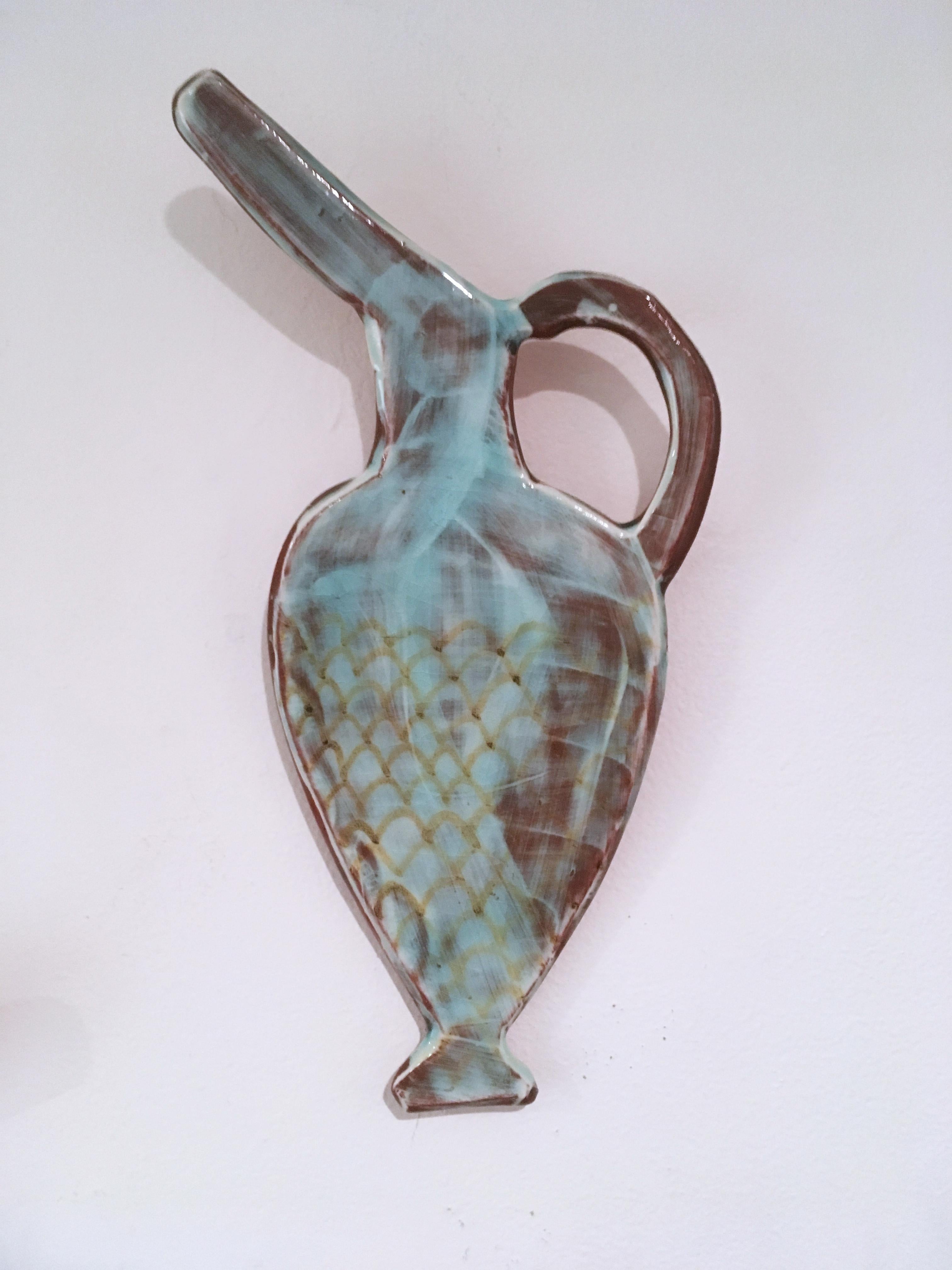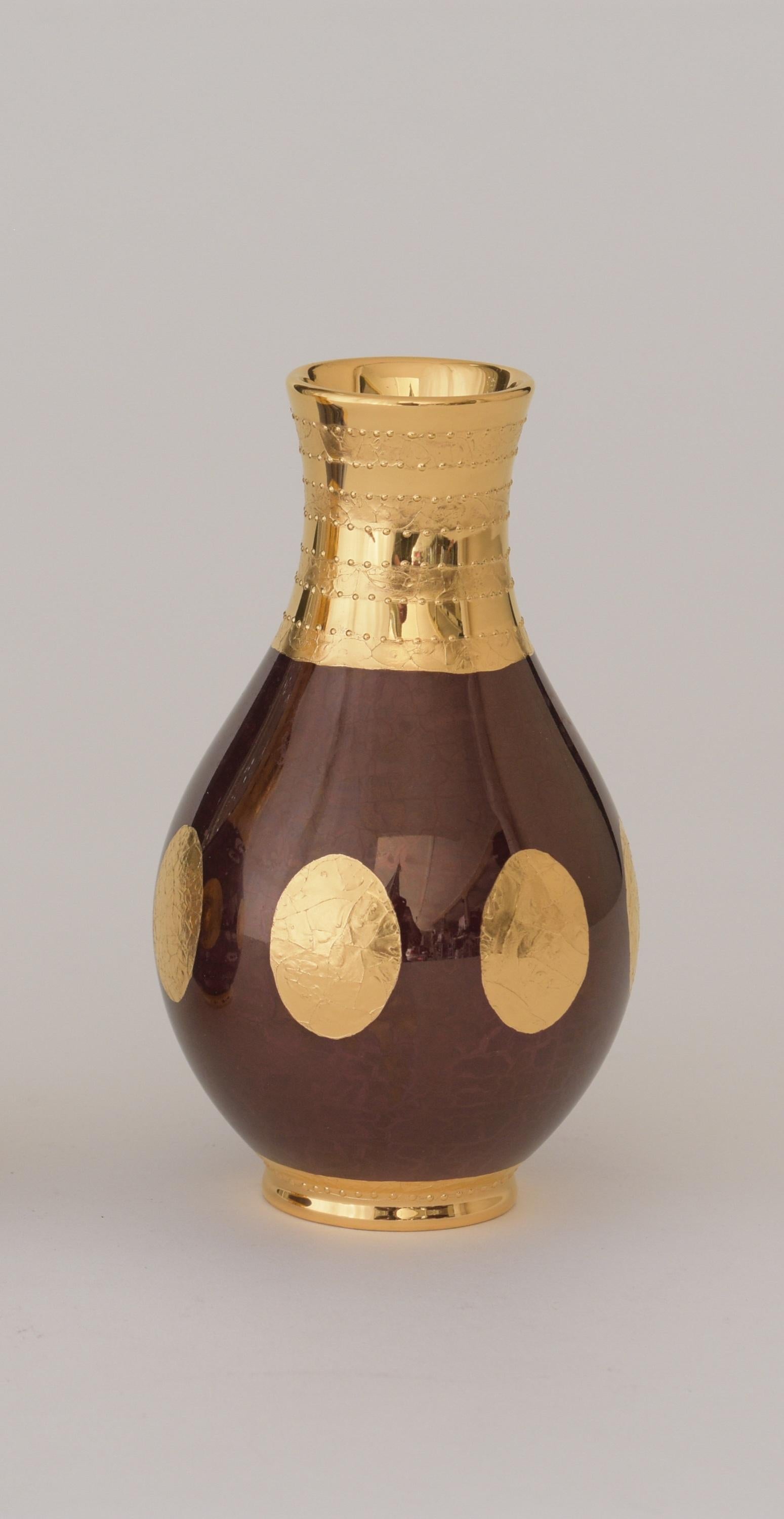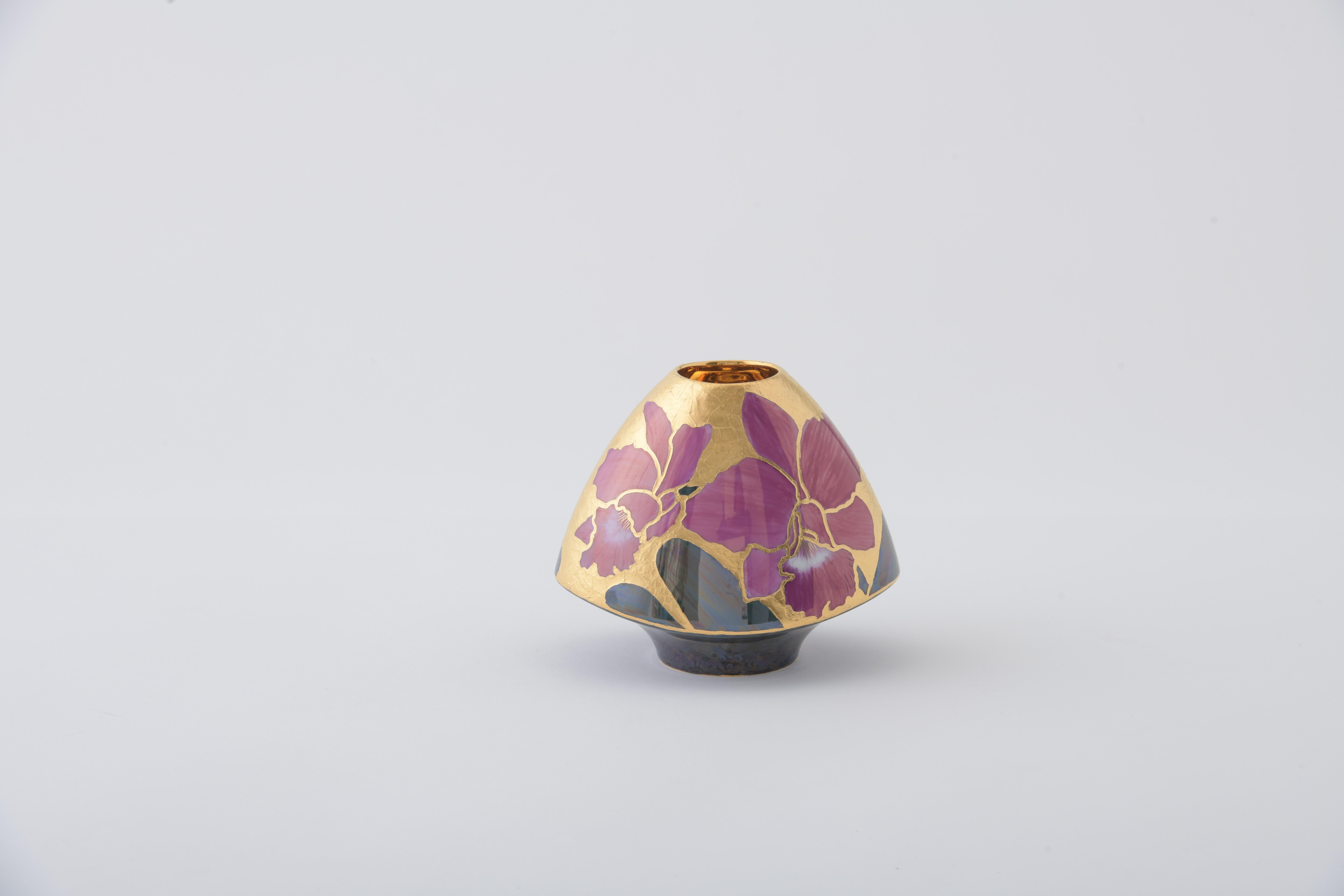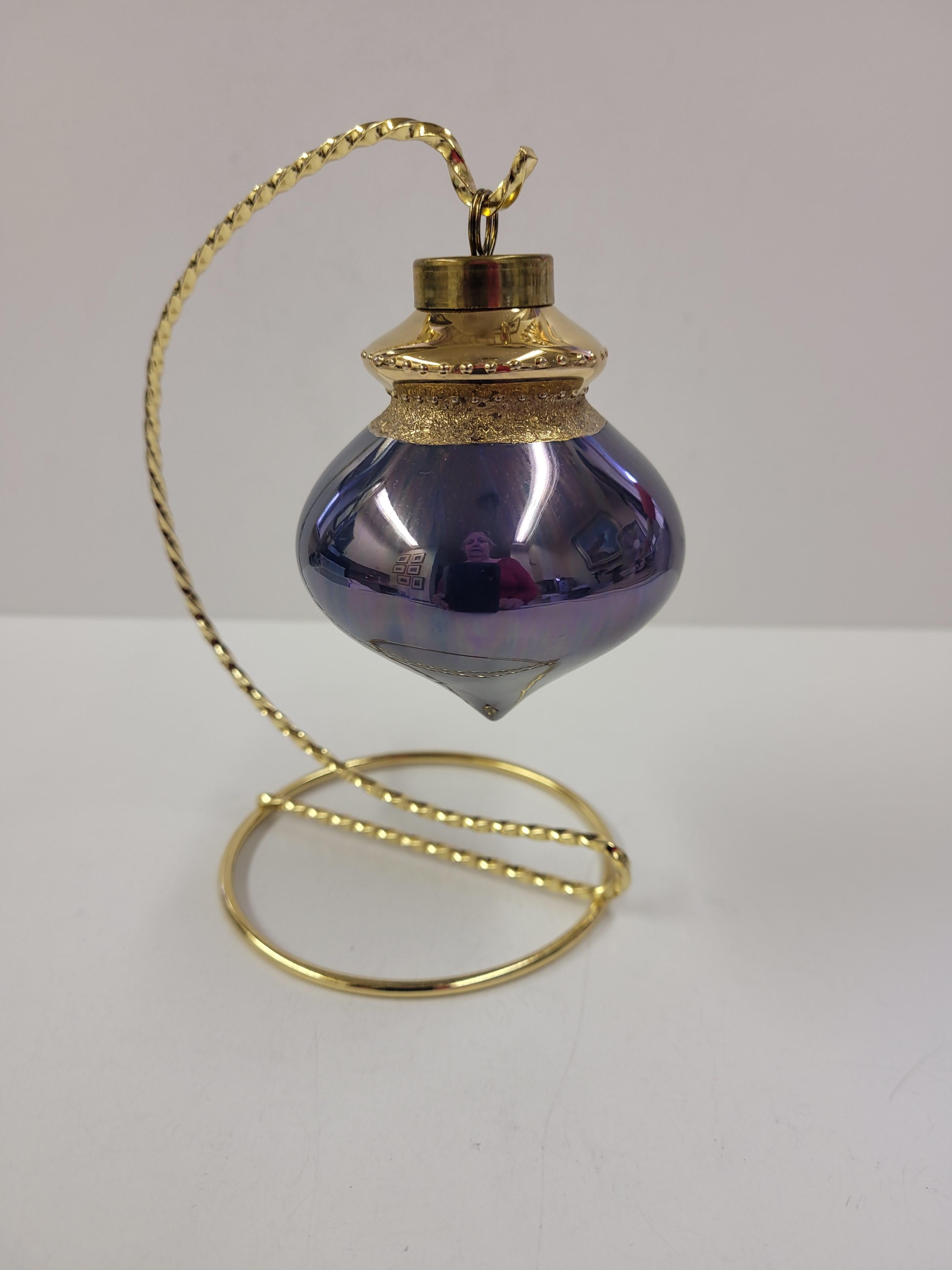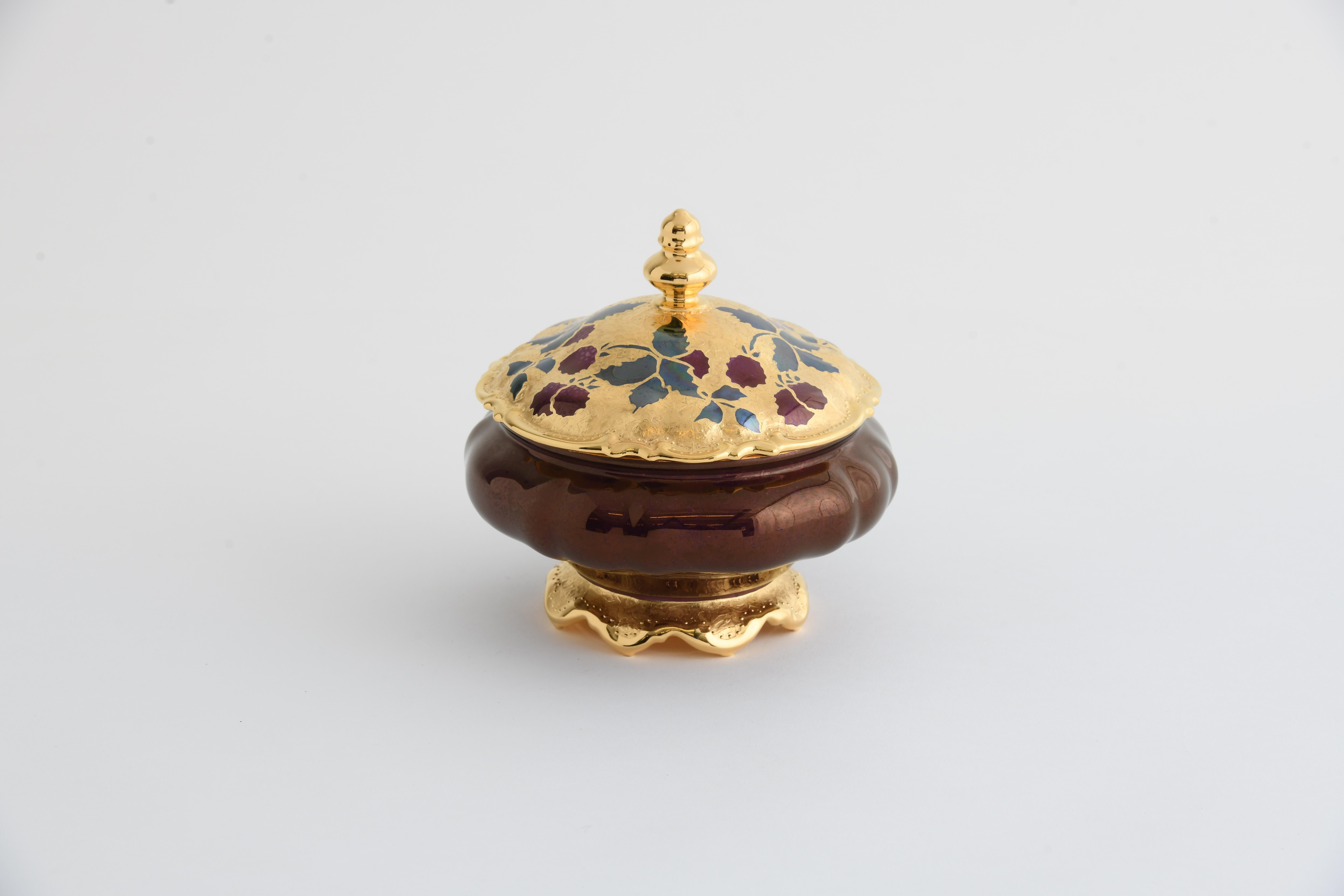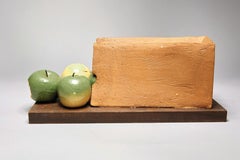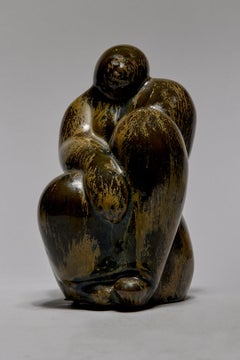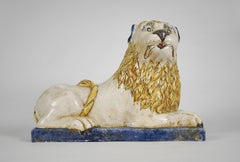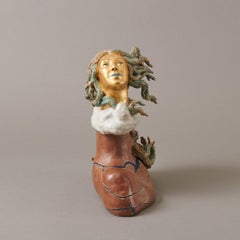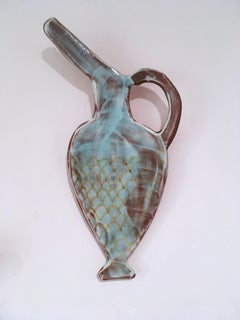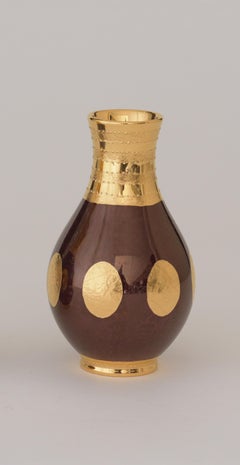Items Similar to Earth, Ceramic Figural Female Head by Cleveland School Artist
Video Loading
Want more images or videos?
Request additional images or videos from the seller
1 of 14
Edris EckhardtEarth, Ceramic Figural Female Head by Cleveland School Artistc. 1939
c. 1939
On Hold
$15,000
On Hold
£11,523.94
On Hold
€13,240.88
On Hold
CA$21,099.36
On Hold
A$23,704.18
On Hold
CHF 12,385.47
On Hold
MX$289,320.64
On Hold
NOK 157,259.32
On Hold
SEK 148,026.52
On Hold
DKK 98,808.38
About the Item
Edris Eckhardt (American, 1905-1998)
Earth, c. 1939
Signed on base
Glazed earthenware
20.5 x 7.5 x 7 inches
Born in Cleveland, Ohio January 28, 1905, Edris was given the name Edythe Aline Eckhardt. After graduating from Cleveland's East High she enrolled in the painting program at Cleveland School of Art. While enrolled in school she worked part-time at Cowan Pottery where she learned production techniques and firing schedules of various ceramic materials. She switched her choice of study at CIA to sculpture and graduated from Cleveland's School of Art in 1932. Edythe changed her name to the non-gender-specific name Edris in her mid-twenties after being passed over for an award to study sculpture in Europe for one year.
Following graduation Edris studied sculpture with Alexander Archipenko in Woodstock, New York. She returned to Cleveland that same year. She was hired as a faculty member of Cleveland School and taught at the institution for 30 years.
From 1935-1942 Ms. Eckhardt was the head of the Ceramics and Sculpture division of the Federal Art Project (later known as Works Progress Administration - WPA) of Cleveland. During this time frame she won first prize of the 1936 Cleveland Museum of Art May Show for her Alice in Wonderland figure, third Prize in the 1937 May Show for a Song of the South figure, exhibited her work at the 1939 Golden Gate Exposition in San Francisco and in the 1939 New York World's Fair. Eleanor Roosevelt commissioned Edris to sculpt a figure of Huckleberry Finn. It was completed and installed near a reflecting pond in 1939.
Cleveland College hired Ms. Eckhardt as a faculty member from 1940-1956. This overlapped with her teaching positions from 1947-1957 at Western Reserve University (Cleveland) and Notre Dame College from 1950-1970. She shared her knowledge of ceramics with the general public by presenting demonstrations on television beginning in 1947 and by contributing articles to Ceramics Monthly magazine as early as 1954.
Around 1953 Eckhardt began experimenting in glass making. The studio artist and teacher known for ceramics would become known at this time as a studio glass artist. An article about Gold Glass in the December 1956 issue of Craft Horizons describes Edris as a "slip of a woman" who "rolls out sheets of her own glass with a rolling pin on a marble-topped table in her cellar".
Ms. Eckhardt received her first John Simon Guggenheim Award for Fine Arts in 1955. Her second Guggenheim Award for Fine Arts was presented in 1959. Edris used her first Guggenheim award to study glass in France, England and Italy. She was awarded a Louis Comfort Tiffany Foundation Fellowship in 1956, the same year she presented a paper at the International Glass Congress in Paris.
During the 1960s Edris studied bronze casting at CIA. From 1962-1963 she taught in the Glass Department at University of California, Berkeley. While West she researched the simultaneous casting of glass and bronze. Her continuing research was successful and she used this technique to create sculptures as late as 1979. Ms. Eckhardt returned to Cleveland after her year in California.
Edris was awarded The Cleveland Arts Prize in 1971. The award recognized her as a "Pioneer in Glass Sculpture".
Edris Eckhardt died in Cleveland Heights, Ohio in 1998.
- Creator:Edris Eckhardt (1905 - 1998, American)
- Creation Year:c. 1939
- Dimensions:Height: 20.5 in (52.07 cm)Width: 7.5 in (19.05 cm)Depth: 7 in (17.78 cm)
- Medium:
- Movement & Style:
- Period:
- Condition:
- Gallery Location:Beachwood, OH
- Reference Number:1stDibs: LU1768211892892
About the Seller
5.0
Platinum Seller
Premium sellers with a 4.7+ rating and 24-hour response times
Established in 1975
1stDibs seller since 2022
34 sales on 1stDibs
Typical response time: <1 hour
- ShippingRetrieving quote...Shipping from: Beachwood, OH
- Return Policy
Authenticity Guarantee
In the unlikely event there’s an issue with an item’s authenticity, contact us within 1 year for a full refund. DetailsMoney-Back Guarantee
If your item is not as described, is damaged in transit, or does not arrive, contact us within 7 days for a full refund. Details24-Hour Cancellation
You have a 24-hour grace period in which to reconsider your purchase, with no questions asked.Vetted Professional Sellers
Our world-class sellers must adhere to strict standards for service and quality, maintaining the integrity of our listings.Price-Match Guarantee
If you find that a seller listed the same item for a lower price elsewhere, we’ll match it.Trusted Global Delivery
Our best-in-class carrier network provides specialized shipping options worldwide, including custom delivery.More From This Seller
View AllBag of Apples, Mid-Century Ceramic Still Life Sculpture, Cleveland School
By Lawrence Edwin Blazey
Located in Beachwood, OH
Lawrence Blazey (American, 1902-1999)
Bag of Apples, c. 1950
Ceramic
6 x 14 x 5.5 inches, including base
A graduate of the Cleveland School of Art in ...
Category
1950s Figurative Sculptures
Materials
Ceramic
Mid-Century Ceramic Sculpture of a Seated Female, Cleveland School Artist
Located in Beachwood, OH
Walter Sinz (American, 1881-1966)
Seated Female, c. 1940
Ceramic
6 x 3.5 x 3.5 inches
Walter A. Sinz was an American sculptor born in Cleveland, Ohio on July 13, 1881. Sinz’s fathe...
Category
1940s Figurative Sculptures
Materials
Ceramic
French Faience Tuilerie Normande Mesnil de Bavent Ceramic Figure of a Lion
Located in Beachwood, OH
French Faience Tuilerie Normande Mesnil de Bavent
Figure of a Lion, 19th Century
Ceramic on a rectangular plinth
Impressed 'TN Bavent' to underside
8 x 8 x 14 inches
Tuilerie Normande Mesnil de Bavent is a French pottery factory.
The first pottery factory here was set up in 1842 by industrialist Maurice Comptet. He bought a bit of production organization to an artisanal craft, enabling mass production of tiles, pots and architectural ornaments. The Tuilerie du Mesnil de Bavent (tuilerie means tile) business flourished and his sons inherited. One stayed in Bavent to make pots, the other developed a factory mainly producing pots, in Caen.
Bavent pottery...
Category
19th Century Figurative Sculptures
Materials
Ceramic
Venus with Koalas in Her Hair, 21st Century Contemporary Ceramic Sculpture
Located in Beachwood, OH
Kristen Newell (American, b. 1989)
Venus with Koalas in Her Hair, 2020
Glazed stoneware and acrylic
Signed and dated on bottom
14 x 12 x 6 inches
Kristen Newell was born in a small town on the coast of Massachusetts, where from a very early age, she demonstrated a strong propensity for the arts. Important additional inspiration came from her family and from the family of a childhood friend, where Kristen found herself surrounded by the work of Paul Manship, her friend’s grandfather and one of America’s greatest sculptors.
With increased focus on her art, along with winning numerous awards throughout high school, Newell eagerly enrolled in the arts program at University of Vermont and augmented her studies with a valuable year at the Cleveland Institute of Art.
Upon graduation, Newell moved back to Cleveland to begin her art career and started participating in group shows, including River Gallery and the Ohio State...
Category
2010s Contemporary Figurative Sculptures
Materials
Glaze, Stoneware, Acrylic
Four Three Two One, 21st Century Contemporary Surrealist Ceramic Sculpture
Located in Beachwood, OH
Kristen Newell (American, b. 1989)
Four Three Two One, 2015
Stoneware, porcelain and acrylic
Signed and dated on bottom
16 x 15 x 14 inches
Kristen Newell was born in a small town on the coast of Massachusetts, where from a very early age, she demonstrated a strong propensity for the arts. Important additional inspiration came from her family and from the family of a childhood friend, where Kristen found herself surrounded by the work of Paul Manship, her friend’s grandfather and one of America’s greatest sculptors.
With increased focus on her art, along with winning numerous awards throughout high school, Newell eagerly enrolled in the arts program at University of Vermont and augmented her studies with a valuable year at the Cleveland Institute of Art.
Upon graduation, Newell moved back to Cleveland to begin her art career and started participating in group shows, including River Gallery and the Ohio State...
Category
2010s Contemporary Figurative Sculptures
Materials
Porcelain, Stoneware, Acrylic
Maybe She's Not a Straight On Type of Girl, Marbled Ceramic Head, 21st Century
Located in Beachwood, OH
Kristen Newell (American, b. 1989)
Maybe She's Not a Straight On Type of Gal, 2022
Stoneware and porcelain
Signed and dated on bottom
12 x 9 x 9 inches
Kristen Newell was born in a small town on the coast of Massachusetts, where from a very early age, she demonstrated a strong propensity for the arts. Important additional inspiration came from her family and from the family of a childhood friend, where Kristen found herself surrounded by the work of Paul Manship, her friend’s grandfather and one of America’s greatest sculptors.
With increased focus on her art, along with winning numerous awards throughout high school, Newell eagerly enrolled in the arts program at University of Vermont and augmented her studies with a valuable year at the Cleveland Institute of Art.
Upon graduation, Newell moved back to Cleveland to begin her art career and started participating in group shows, including River Gallery and the Ohio State...
Category
2010s Contemporary Figurative Sculptures
Materials
Porcelain, Stoneware
You May Also Like
Flat Pot VII, 2019, Glazed earthenware wall sculpture, flat tea cup, earth tones
Located in Jersey City, NJ
"Flat Pot VII" (2019)
Glazed earthenware flat tea cup wall sculpture
Hanging system on back side
Earth tones and pastels, light minty sage green on terracotta clay
Certificate of au...
Category
21st Century and Contemporary Contemporary Still-life Sculptures
Materials
Earthenware, Glaze, Terracotta
Flat Pot X, 2019, Glazed earthenware flat wall sculpture pastel on terracotta
Located in Jersey City, NJ
"Flat Pot X" (2019)
Glazed earthenware flat pitcher wall sculpture
Hanging system on back side
Pastels and earth tones, light minty blue on terracotta clay
Certificate of authenticity
Category
21st Century and Contemporary Contemporary Still-life Sculptures
Materials
Earthenware, Glaze, Terracotta
"Waltz (2/2)" (2024) By Carolyn Barlock, Original Gold and Porcelain Vase
By Carolyn Barlock
Located in Denver, CO
"Waltz (2/2)" (2024) by Carolyn Barlock is an original, handmade vase made with Persian luster and 22kt gold on porcelain.
About the Artist:
Carolyn L. Barlock was born in Denver, ...
Category
2010s Still-life Sculptures
Materials
Gold
"Cherished Memories" (2024) By Carolyn Barlock, Original Gold and Porcelain Vase
By Carolyn Barlock
Located in Denver, CO
"Cherished Memories" (2024) by Carolyn Barlock is an original, handmade vase made with Persian luster and 22kt gold on porcelain.
About the Artist:
Carolyn L. Barlock was born in D...
Category
2010s Still-life Sculptures
Materials
Gold
"Jolly" (2024) By Carolyn Barlock, Original Gold and Porcelain Ornament
By Carolyn Barlock
Located in Denver, CO
"Jolly" (2024) by Carolyn Barlock is an original, handmade ornament made with Persian luster and 22kt gold on porcelain.
About the Artist:
Carolyn L. Barlock was born in Denver, Co...
Category
2010s Still-life Sculptures
Materials
Gold
"Beyond Compare"(2024) By Carolyn Barlock, Original Gold and Porcelain Sculpture
By Carolyn Barlock
Located in Denver, CO
"Beyond Compare" (2024) by Carolyn Barlock is an original, handmade sculpture made with Persian luster and 22kt gold on porcelain.
About the Artist:
Carolyn L. Barlock was born in ...
Category
2010s Still-life Sculptures
Materials
Gold
